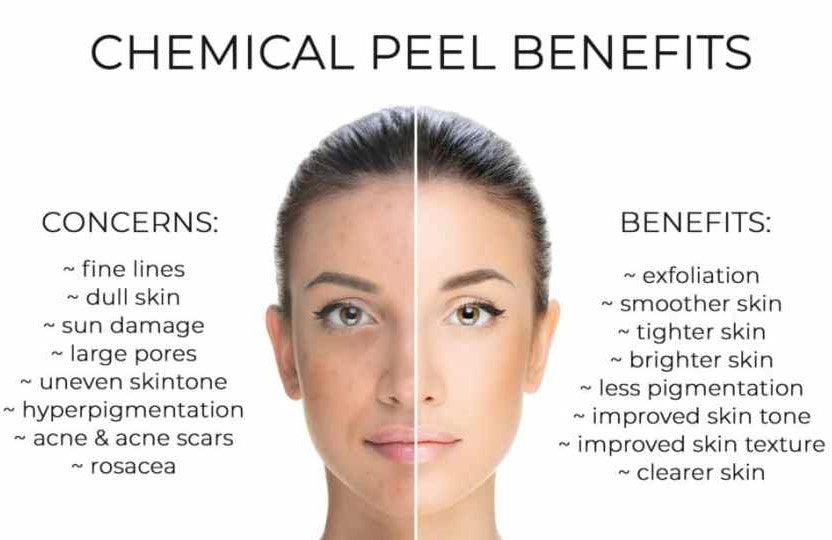A chemical peel is a procedure in which a chemical solution is applied to the skin to remove the top layers. The skin that grows back is smoother. You may need to undergo the procedure more than once with a light or medium peel to get the desired results.
Chemical peels are used to treat wrinkles, discolored skin, and scars—usually on the face. They can be done alone or combined with other cosmetic procedures. They can be done at different depths, from light to deep. Deeper chemical peels offer more dramatic results but also take longer to recover from.
Products & Services
- A Book: Mayo Clinic Family Health Book
Why it’s done
A chemical peel is a skin-resurfacing procedure. Depending on the issues you’re addressing with the procedure, you’ll choose a chemical peel in one of three depths:
- Light chemical peel. A light (superficial) chemical peel removes the outer layer of skin (epidermis). It treats fine wrinkles, acne, uneven skin tone, and dryness. You might have a light peel every two to five weeks.
- Medium chemical peel. A medium chemical peel removes skin cells from the epidermis and portions of the upper part of your middle layer of skin (dermis). It treats wrinkles, acne scars, and uneven skin tone. You might need to repeat the procedure to achieve or maintain the desired result.
- Deep chemical peel. A deep chemical peel removes skin cells even deeper. Your doctor might recommend one for deeper wrinkles, scars, or precancerous growths. You won’t need repeat procedures to get the full effect.
Chemical peels can’t remove deep scars or wrinkles or tighten sagging skin.
Risks
A chemical peel can cause various side effects, including:
- Redness, scabbing, and swelling. Routine healing from a chemical peel involves redness of the treated skin. Redness might last for a few months after a medium or deep chemical peel.
- Scarring. A chemical peel can rarely cause scarring, typically on the lower part of the face. Antibiotics and steroid medications can soften the appearance of these scars.
- Changes in skin color. A chemical peel can cause treated skin to become darker than usual (hyperpigmentation) or lighter than normal (hypopigmentation). Hyperpigmentation is more common after superficial peels, while hypopigmentation is more common after a deep peel. These problems are more common in people with brown or black skin and can sometimes be permanent.
- Infection. A chemical peel can lead to a bacterial, fungal or viral infection, such as a flare-up of the herpes virus, which causes cold sores.
- Heart, kidney, or liver damage. A deep chemical peel uses carbolic acid (phenol), which can damage the heart muscle and cause the heart to beat irregularly. Phenol can also harm the kidneys and liver. To limit exposure to phenol, a deep chemical peel is done a portion at a time, in 10- to 20-minute intervals.
A chemical peel isn’t for everyone. Your doctor might caution against a chemical peel or certain types of chemical peels if you:
- Have taken the oral acne medication isotretinoin (Myorisan, Claravis, others) in the past six months
- Have a personal or family history of ridged areas caused by an overgrowth of scar tissue (keloids)
- Are pregnant
- Have frequent or severe outbreaks of cold sores

